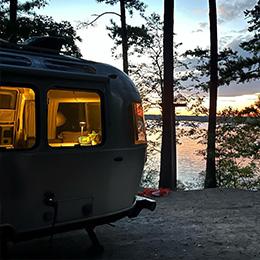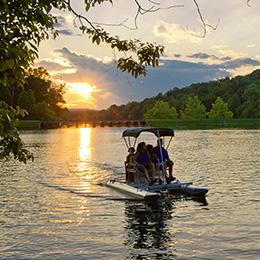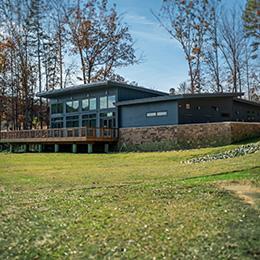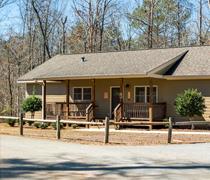
The Coastal Resources Division conducts a variety of studies that gather data to help fisheries managers make better decisions. A brief description of each study is listed below. Please click on the name of the study for more details.
Two primary vessels support many of these surveys. To learn more about the Research Vessels Reid W. Harris and Glynn, click here.
Fisheries-Independent Surveys
Fisheries-independent surveys are conducted by CRD marine biologists and technicians using standardized sampling methods, independent of recreational or commercial fishing activities; In short, these are surveys that CRD conducts "independently" of outside sources. CRD's fisheries-independent surveys include:

Coastal Longline Survey
- Objective: Develops index of abundance for adult red drum and sharks
- Duration: June through December
- Gear: Half-mile longline with 60 circle-hooks set for 30 minutes
- Locations: Atlantic Ocean offshore Georgia
- Effort: 35 gear deployments per 6 weeks from June through December

Ecological Monitoring Trawl Survey
- Objective: Monitors abundance and size of estuarine fish and invertebrates. Information from this survey is used to open and close fishing seasons for shrimp and blue crabs and provide regional fisheries management advice on relative abundance of juvenile fish stocks.
- Duration: All year
- Gear: 40 ft otter trawl.
- Locations: Six estuarine systems: Wassaw, Ossabaw, Sapelo, St. Simons, St. Andrew, Cumberland
- Effort: 36 gear deployments per month.
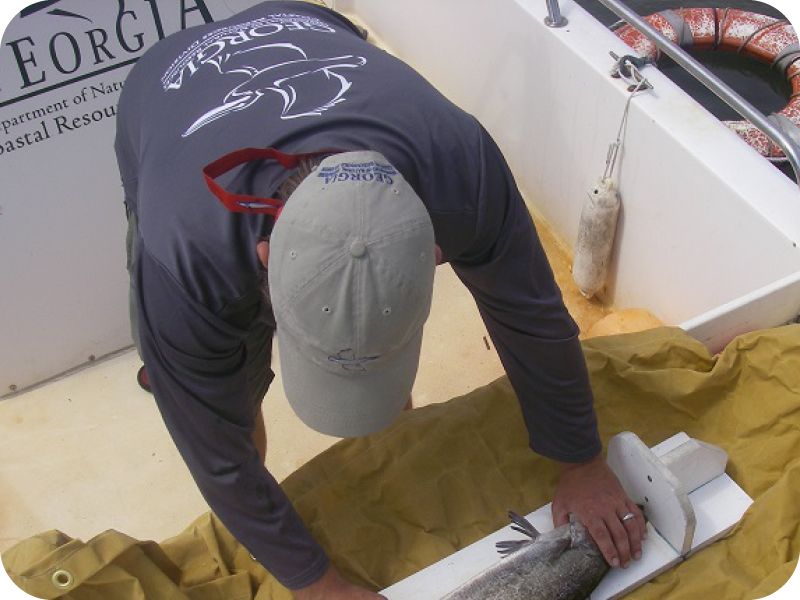
Marine Sportfish Population Health Survey: Fall Trammel Net Survey
- Objective: Monitors abundance, size, and age of multiple species of recreationally important estuarine fish species (e.g. spotted seatrout, red drum)
- Duration: September through November
- Gear: 300 ft trammel net
- Locations: Wassaw estuary and Altamaha River Delta
- Effort: 25 gear deployments per month in each estuary
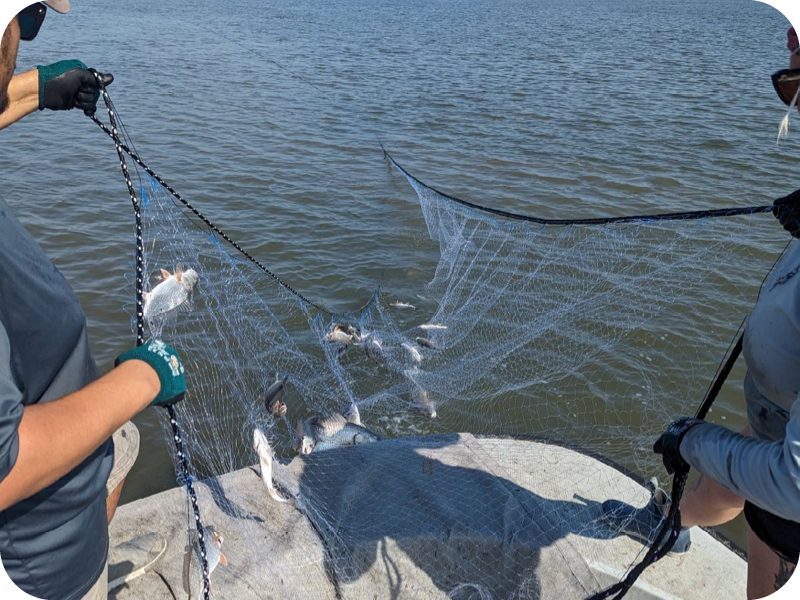
Marine Sportfish Population Health Survey: Summer Red Drum Gillnet Survey
- Objective: Monitors recruitment of Young-of-Year (YOY) red drum
- Duration: June through August
- Gear: 300 ft single panel gill net
- Locations: Wassaw estuary and Altamaha River Delta
- Effort: 36 gear deployments per month in Wassaw; 36 gear deployments per month in the Altamaha River Delta

Red Drum Escapement Project
- Objective: Use acoustic telemetry tags and passive receiver arrays to monitor the movement and survival of Red Drum
- Duration: All year
- Method: Tagged red drum with internal acoustic tags, targeting fish at the upper end and over slot (14-23”).
- Locations: Tagging efforts in Wassaw and St. Simons sounds; receiver arrays in those areas, some state artificial reefs, and compatibility with arrays used by other states and researchers
- Effort: Tagging all year as fish are available; receivers monitoring 24/7. Tags have a lifespan of up to 6 years.
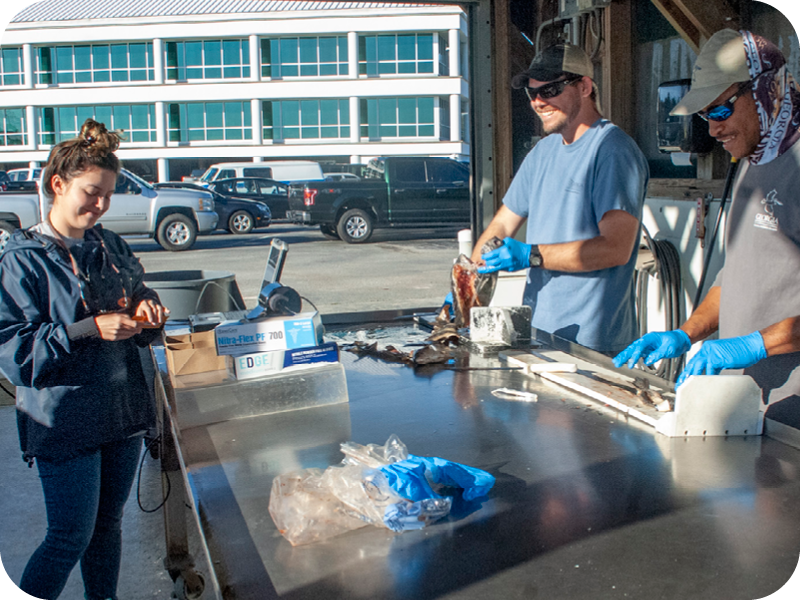
Fish Tissue Contaminant Sampling
- Objective: Collects tissues samples in cooperation with GADNR Environmental Protection Division (EPD) to develop fish consumption recommendations & advisories. Click this link to learn more about and download the EPD Fish Consumption Guidelines.
- Duration: September to August for general contaminants; September through December for mercury trend
- Gears: Hook-and-line, trawls, gill nets, trammel nets
- Species: General Contaminants = Recreational and commercially harvested species. Mercury = Spotted Seatrout
- Locations: General contaminants = Site specific, varies annually. Mercury trend = Three estuaries samples each year (Wassaw, Altamaha & St. Andrews)
- Effort: General contaminants - Minimum of three composites of 5 similarly sized fish for each species and area (15 total). Mercury - 20-30 fish per year (Spotted Seatrout).
Fisheries-Dependent Surveys
Fisheries-dependent surveys use data collected with the help of recreational anglers and commercial fishers. Data is collected from landings reports, in-person interviews with anglers and charter trips, by mail, and by phone. These data are useful in understanding the amount of fishing that's occurring in Coastal Georgia. Some of the ways CRD collects these data include:

Commercial Fisheries Statistics Program
- Objective: Gathers catch, effort, and economic information for commercial fishing trips landing seafood in Georgia
- Duration: All year
- Method: Harvesters and dealers report landings data electronically and on paper forms
- Locations: Coastwide
- Effort: 100% coverage of commercial fishing trips landing seafood in Georgia
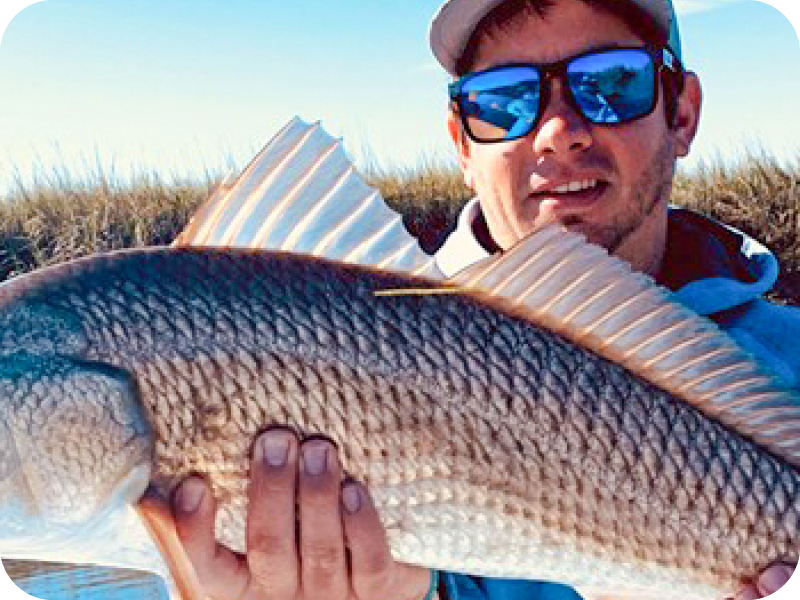
Cooperative Angler Tagging Program
- Objective: Enlists and trains recreational anglers to tag species of concern to gather information on growth, habitat preference, and movement
- Duration: All year
- Method: Recreational anglers (hook and line) are trained in proper fish handling and tagging techniques.
- Locations: Participants live throughout Georgia
- Effort: Three priority species – black drum, red drum, and tripletail with no set goal for level of angler participation

Marine Sportfish Carcass Recovery
- Objective: Collects basic biological information (length and age) from fish caught by recreational anglers
- Duration: All year
- Method: Recreational fishers deposit carcasses of filleted fish in chest freezers located at marinas and other fishing access points.
- Locations: Coastwide
- Effort: 15 active sites (freezers)
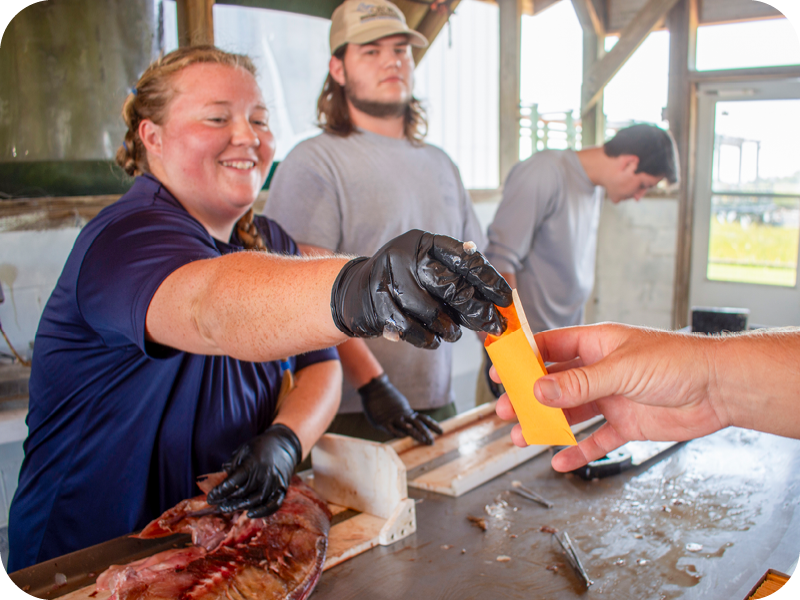
Fish Age and Growth Laboratory
- Objective: Collects, processes, evaluates, and preserves ageing structures from priority fish species
- Methods: Anatomical structures are evaluated using established procedures with the aid of a computer-based image analysis system.
- Effort: Determines age for all samples collected in previous fiscal year
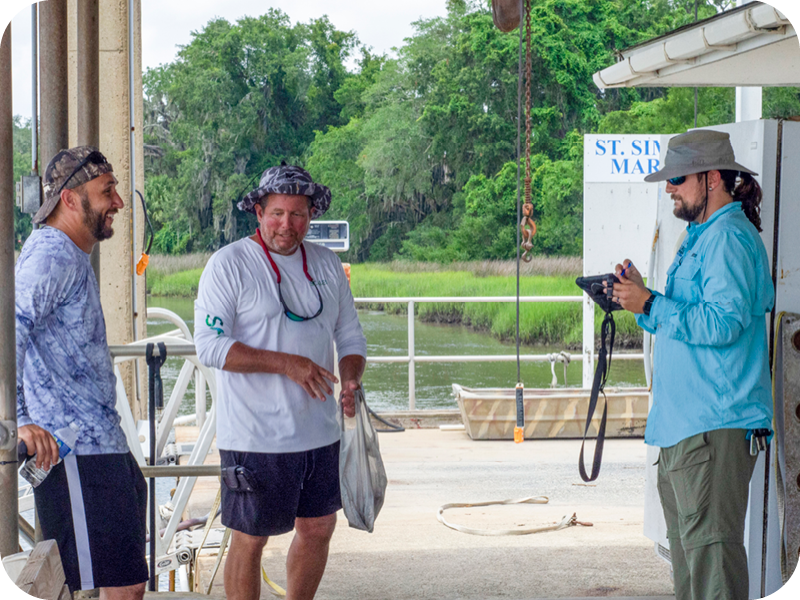
Recreational Angler Survey
- Objective: Surveys anglers and saltwater fishing guides to determine catch and effort
- Duration: March through December
- Method: Creel clerks interview anglers at marinas, boat ramps, and docks to gather general biological data as well as catch and effort data.
- Locations: Coastwide
- Effort: 300 fishing access site assignments per year
Questions?
Contact CRD's Research and Survey's Unit Lead, Dr. Jared Flowers, at jared.flowers@dnr.ga.gov or by calling (912) 264-7218.





